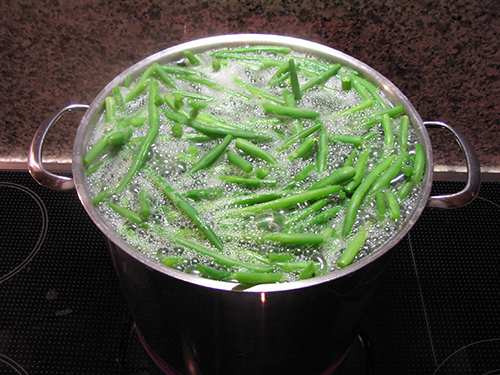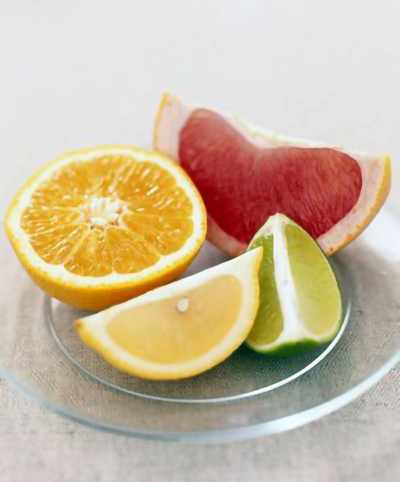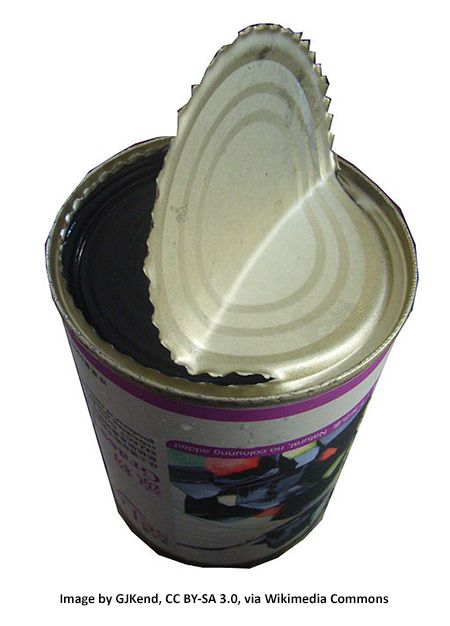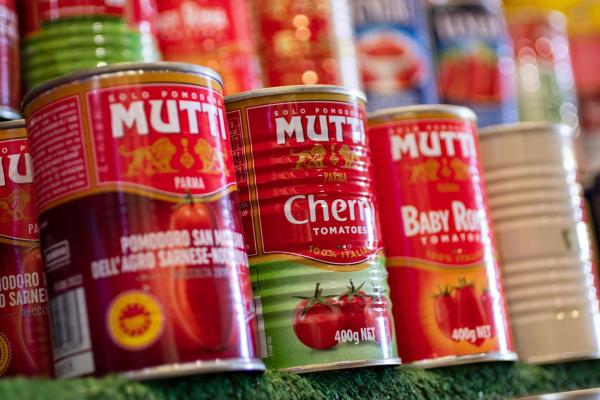Defining Processed & Further Processed
First, let’s get a handle on the term ‘processed.’ Unless you are picking fruit and eating directly from a tree or on your hands and knees grazing, almost all the foods you eat are in some way processed. Processing makes eating safer as it reduces germs, eliminates dirt and filth, inhibits spoilage, aids transportation, simplifies storage, and prolongs shelf life. For fresh produce, processing involves harvesting, washing, grading for size and quality, packaging, shipping, and cold storage. Foods like apples may also receive a coating of edible alginate to protect the skin and color of the fruit. Oranges may be placed in a room with ethylene gas to turn green oranges orange. Before packaging, some fruits and vegetables are chopped, diced, and cut to desirable shapes or convenient sizes. In fact, you process foods at home by refrigerating, freezing, washing, peeling, cutting, marinating, seasoning, and cooking.
Fruits and Vegetables Are Perishable
 Fruits and vegetables are over 90% water. After harvest, they are separated from their source of nutrients, the plant or the tree. This causes the produce to use itself as a nutrient source, resulting in increased respiration and moisture loss, hastening spoilage by oxidation and microbial growth. Storage and processing techniques are used to improve the stability of these perishable products. Refrigeration, freezing, canning, and drying allow us to ship and store fruits and vegetables to consumers worldwide. It allows shoppers to buy produce that is out-of-season in their area. Processing and cold storage help retain valuable nutrients such as vitamins, minerals, and fiber.
Fruits and vegetables are over 90% water. After harvest, they are separated from their source of nutrients, the plant or the tree. This causes the produce to use itself as a nutrient source, resulting in increased respiration and moisture loss, hastening spoilage by oxidation and microbial growth. Storage and processing techniques are used to improve the stability of these perishable products. Refrigeration, freezing, canning, and drying allow us to ship and store fruits and vegetables to consumers worldwide. It allows shoppers to buy produce that is out-of-season in their area. Processing and cold storage help retain valuable nutrients such as vitamins, minerals, and fiber.
Fresh fruits and vegetables are minimally processed before retail sales. Further processing of these foods, by canning and freezing, lower the microbial load, destroy natural enzymes on the produce, which may cause further degradation, and provide the shopper with the convenience of packaging and longer shelf life. Canned produce is placed in a can, then heated in a pressure cooker called a retort. Frozen vegetables are usually blanched, briefly heated, then quickly frozen and packaged. Fruits are not usually blanched before freezing due to their delicacy and acidity.
Comparing Fresh with Canned & Frozen
“[the] exclusive recommendations of fresh produce ignore the nutrient benefits of canned and frozen products.”
-Nutritional comparison of fresh, frozen, and canned fruits and vegetables. Journal of the Science of Food and Agriculture
In 2007, food scientists at the University of California – Davis compared the nutritional composition of fresh, canned, and frozen fruits and vegetables in a meta-analysis of data going back to 1935. They concluded that canned and frozen forms of produce were nutritionally comparable to fresh while offering convenience and diet diversity to consumers. Let’s see why.
Vitamin C is the Key
The California scientists used vitamin C content as the first estimate of the overall nutrient quality because it is  the least stable nutrient in most foods. It’s the nutritional equivalent of the canary in the coal mine; highly sensitive to heat, oxidation, and leaching during processing. Storage time and temperature are also significant factors in vitamin C loss. Good sources of the vitamin are broccoli, tomatoes, leafy greens, apricots, and pineapple.
the least stable nutrient in most foods. It’s the nutritional equivalent of the canary in the coal mine; highly sensitive to heat, oxidation, and leaching during processing. Storage time and temperature are also significant factors in vitamin C loss. Good sources of the vitamin are broccoli, tomatoes, leafy greens, apricots, and pineapple.
When losses were measured on a dry weight basis, the weight of produce minus its water, scientists found that canning reduced vitamin C levels significantly, around 60%. Frozen foods had higher levels of vitamin C than canned. Losses ranged from 10 to 80%, with an average loss of about 50% in frozen foods.
Freshly picked vegetables had the highest amounts of vitamin C, but the nutrient diminished rapidly after harvest. Green peas, measured in wet weight, were found to have losses of over 50% during the first 24 to 48 hours after harvest. According to The Guardian, those “fresh” carrots with the leaves still attached may be several days old before they reach shoppers in the supermarket produce section. While the cooler refrigeration temperatures slow down nutrient loss, time is the real enemy. Other nutrients such as vitamin A, carotenoids (the red, yellow, and orange pigments, which are vitamin A precursors and antioxidants), vitamin E, minerals, and fiber were similar in their concentration between fresh, canned, and frozen fruits and vegetables.
Recommendations from Food Scientists
 After reviewing a wealth of scientific information on the topic, the scientists concluded that due to the time lag before a shopper prepares and eats fresh produce, the canned or frozen alternatives may be nutritionally similar due to microbial and enzymatic deterioration of the fresh food during shipping, handling, and storage. Further processed foods, whether by heat or freezing, offered much stability and shelf life with little sacrifice to nutrition. This processed produce increases the accessibility and diversity of food available to shoppers in food deserts and lowers the cost of natural sources of vitamins, minerals, and fiber.
After reviewing a wealth of scientific information on the topic, the scientists concluded that due to the time lag before a shopper prepares and eats fresh produce, the canned or frozen alternatives may be nutritionally similar due to microbial and enzymatic deterioration of the fresh food during shipping, handling, and storage. Further processed foods, whether by heat or freezing, offered much stability and shelf life with little sacrifice to nutrition. This processed produce increases the accessibility and diversity of food available to shoppers in food deserts and lowers the cost of natural sources of vitamins, minerals, and fiber.
In summary, the authors cautioned that understanding nutritional differences between fresh, canned, and frozen produce will always be complex due to harvest conditions, different cultivars, different soil fertilities, seasonal variations, plant maturities, and processing methods. For those individuals who wish to reduce sodium in their diet, they recommend fresh and frozen produce over canned or buying canned items with no salt added. In canned products using salt, they suggested salt removal by draining the liquid and rinsing the fruits or vegetables in a colander before preparation. Bon appetite!
Sources:
Only 1 in 10 Adults Get Enough Fruits or Vegetable CDC Newsroom
Alginate-based edible films and coating for food packaging applications Foods DOI: 10.3390/foods7100170.
Oranges, Artificial Coloring US Food and Drug
Nutritional comparison of fresh, frozen, and canned fruits and vegetables. Part I Journal of the Science of Food and Agriculture DOI: 10.1002/jsfa.2825
Nutritional comparison of fresh, frozen, and canned fruits and vegetables. Part 2 Journal of the Science of Food and Agriculture DOI: 10.1002/jsfa.2824




